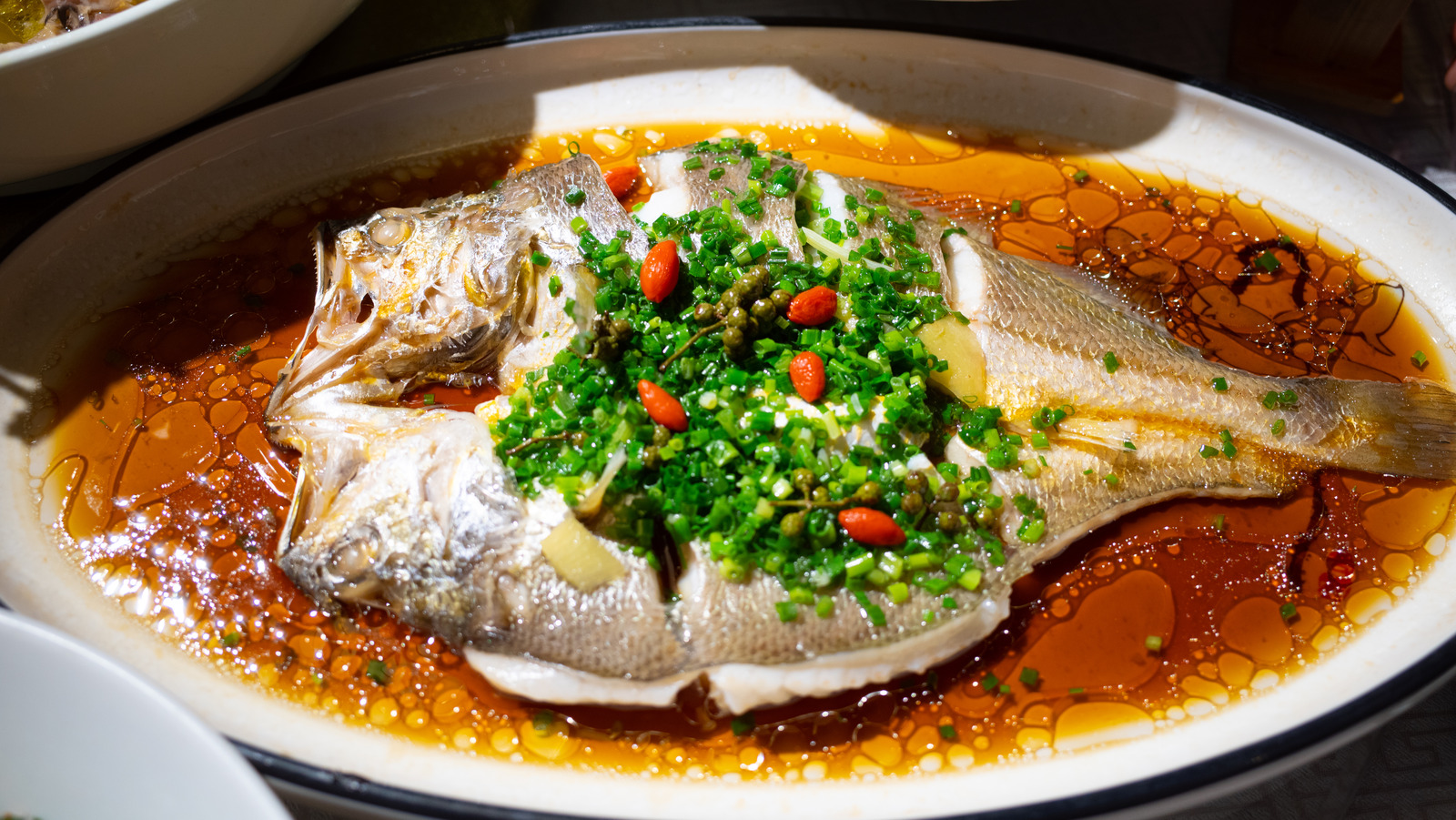Baking, frying, and grilling are just some of the common ways to cook fish. In the vast world of Chinese cuisine, however, there’s a method to cook the seafood that’s traditional and not quite as difficult as you may imagine. Steaming fish is the technique we’re hinting at, which dates back to ancient times in China but can be done in your home anywhere in the world today. So to help uncover the technique further and get must-have tips for the process, Shirley Chung — the Chinese-American chef and owner of Ms Chi Cafe (which is temporarily closed but plans to reopen) who can be found on Instagram and Facebook — has some insight.
“[The] Chinese method of steaming fish is to steam a whole fish or filet over boiling water on a steamer,” Chung says. “The steaming water needs to be boiling on high heat, to ensure maximum steam vapor. Because the flesh of the fish is not cooked over direct heat but the gentle high steam, the result is moist, delicate, soft and flaky, there won’t be any caramelization or crispy texture.”
Because steaming fish the Chinese way results in such a soft and delicate texture, the fish is really allowed to shine. “The fish is simply seasoned with salt before cooking, steamed in its own juice, [then] sauce and a hot oil sizzle is poured over the fish after it’s steamed. It showcases the steamed fish in its natural form. The freshness of the fish is crucial for the success of this dish,” Chung says.
Types of fish, seasoning options, and more tips for steaming
When it comes to steaming, there are ideal varieties of fish (which could otherwise be overcooked) that work best for the technique. “A flaky white fish is better suited to steam than a dense, oily, large fish. Rock cod and scorpion fish are the most popular for whole [steamed] fish. Snapper, sea bass, turbot, sablefish, and halibut work very well too,” says Chung. Arctic char, cod, and tilapia are other types of fish to try.
There are also important ways to prepare the fish. “If you are steaming a whole fish, ask your fishmonger to scale and clean the fish, make sure gills and the dark stomach lining are completely removed, rinse the fish under gentle running water to remove all the blood, this way your fish won’t be fishy after cooking,” Chung says. “If you are steaming a filet of fish, make sure you remove the bloodline from the filet, then salt and steam it [in] the same process as the whole fish.” Also be sure the fish is dry, scored, and seasoned with salt or a marinade.
Another perk to steaming fish is that it doesn’t take long. Chung says a whole two-pound fish takes between about 10 minutes, while a filet is done in seven minutes. You can also add fresh ginger, garlic, or green onions to the steaming vessel for more flavor. Serve the fish with white rice, our easy fried rice, or our smashed cucumber salad recipe.






